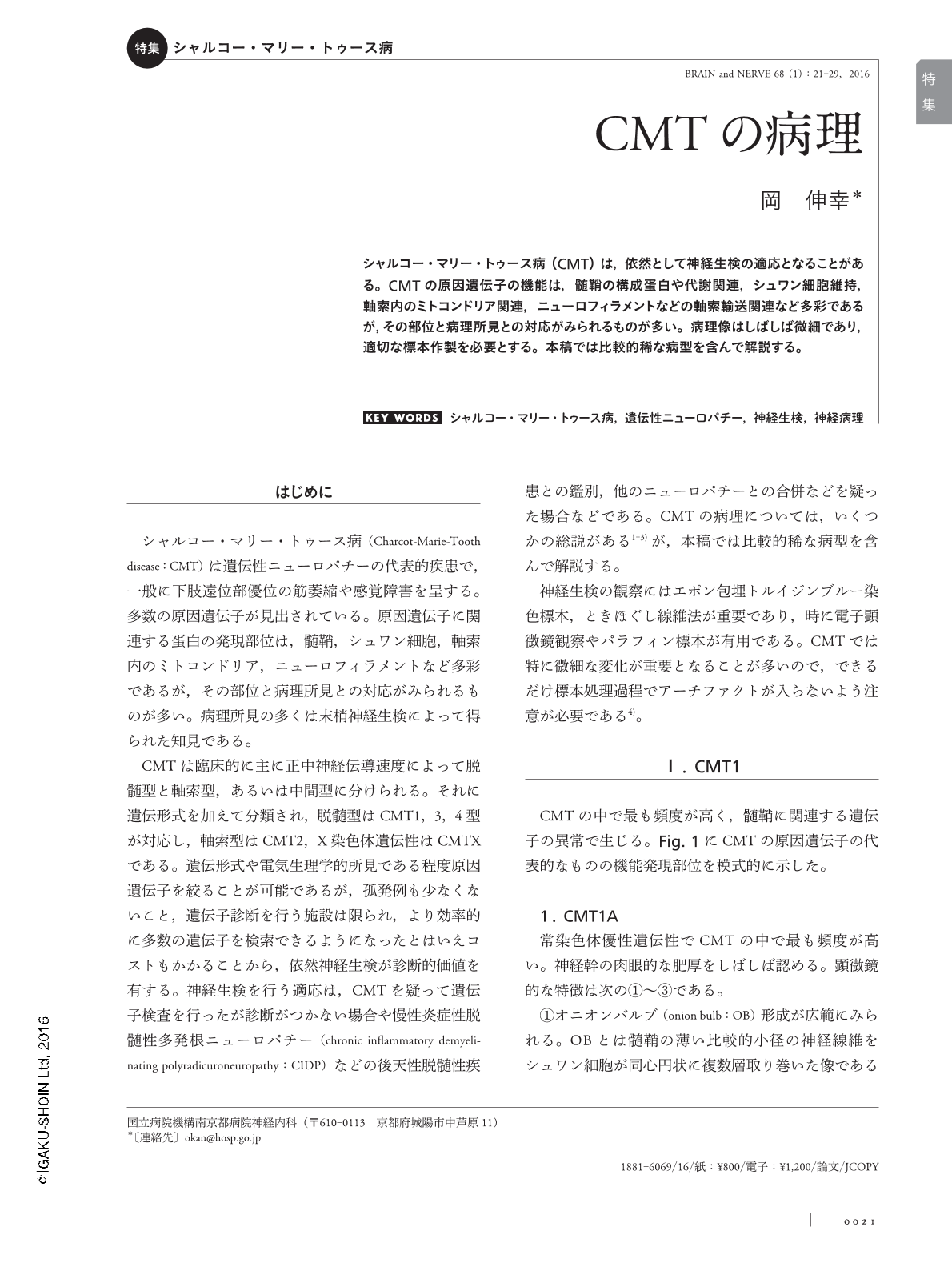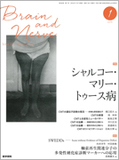Japanese
English
- 有料閲覧
- Abstract 文献概要
- 1ページ目 Look Inside
- 参考文献 Reference
シャルコー・マリー・トゥース病(CMT)は,依然として神経生検の適応となることがある。CMTの原因遺伝子の機能は,髄鞘の構成蛋白や代謝関連,シュワン細胞維持,軸索内のミトコンドリア関連,ニューロフィラメントなどの軸索輸送関連など多彩であるが,その部位と病理所見との対応がみられるものが多い。病理像はしばしば微細であり,適切な標本作製を必要とする。本稿では比較的稀な病型を含んで解説する。
Abstract
Although genetic testing is available, nerve biopsy is useful in selected patients for the diagnosis of Charcot-Marie-Tooth disease (CMT). These are sporadic cases of hereditary neuropathy, or familial cases in which genetic testing is negative. CMT is caused by mutations of various genes. The pathological features of CMT have mostly been investigated using nerve biopsy, which may shed light on the presumed functions of mutated gene products.
PMP22 duplication in CMT1A induces numerous large onion bulb lesions (OB). Compared to chronic inflammatory demyelinating polyradiculoneuropathy, the differential features of CMT1A are patchy distribution of OB and non-inflammatory lesions. CMT1B also manifests as OB, but presents abnormal compaction of myelin sheaths caused by uncompacted myelin or excessive myelin folding.
CMT2 includes axonal neuropathies and many causative genes have been found. CMT2A (MFN2 mutation) shows abnormal mitochondria with a spherical morphology instead of tubular in the longitudinal direction. CMT4 consists of autosomal recessive forms with demyelinating pathology. Most subtypes have mutations of genes relating to myelin maintenance, and pathologically, they show abnormal folding of the myelin structure.

Copyright © 2016, Igaku-Shoin Ltd. All rights reserved.


